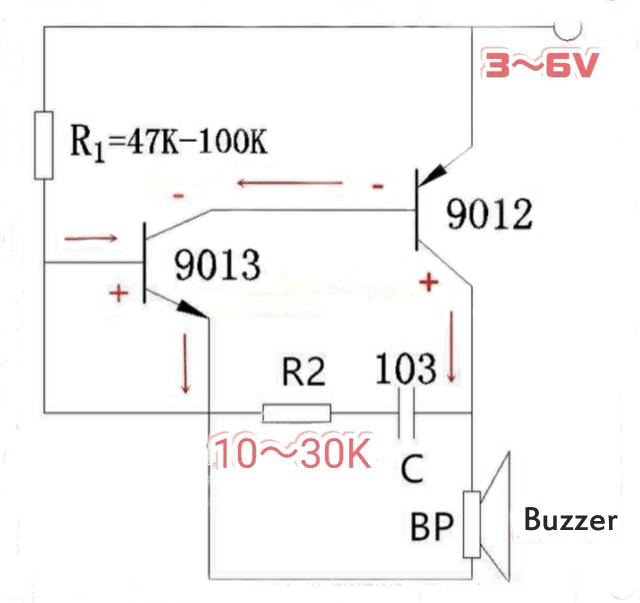How to Tell If a Buzzer Is Bad or Faulty
There are active buzzers and passive buzzers. The former built-in audio oscillator, thus the use of an external audio source is not required. The active buzzer can make a sound once with a power supply. While the passive buzzer requires an external audio signal source to issue sound. Due to the construction of these two types of buzzers is not the same, so the test method of good or bad is also different.
The following is to introduce their test methods.
The Test Method of Active Buzzer

Active buzzer internal audio oscillator circuit diagram
The audio oscillation circuit inside the active buzzer is generally composed of two SOT-23 package complementary triodes as shown above. The oscillation frequency is mainly determined by the resistor R2 and capacitor C also related to the supply voltage. The value can be changed to obtain different oscillation frequencies.
In other words, this active buzzer is actually a passive buzzer with an audio oscillation circuit integrated inside.
The built-in audio source of the active buzzer is used when the pin is polarized. The pin is long for the positive pole and generally marked with a “+” sign at the positive pin. When using, this buzzer as long as access to the rated DC voltage can emit a buzzer sound. So the detection of its good or bad, as long as supply with appropriate DC voltage.
If it can not sound or sound is very small, basically can not be used. Active buzzer failure is often caused by the internal audio oscillation circuit due to reverse power supply polarity or access voltage is too high and damaged.
The Test Method of Passive Buzzer
There is only a coil inside the passive buzzer. So the structure is similar to headphones. When working, the coil is connected to the audio oscillation signal at both ends, and the alternating magnetic force generated by the coil is used to drive the metal sheet on the internal magnet to produce mechanical vibration, thus emitting a buzzer sound.
To test whether this buzzer is good or bad, you can directly use the multimeter resistance file to measure the resistance between its two pins.
Under normal circumstances, the resistance value is generally within one hundred ten Ω. If the measured resistance is infinity, the buzzer has been damaged. This passive buzzer failure is often caused by the pin and coil desoldering.



